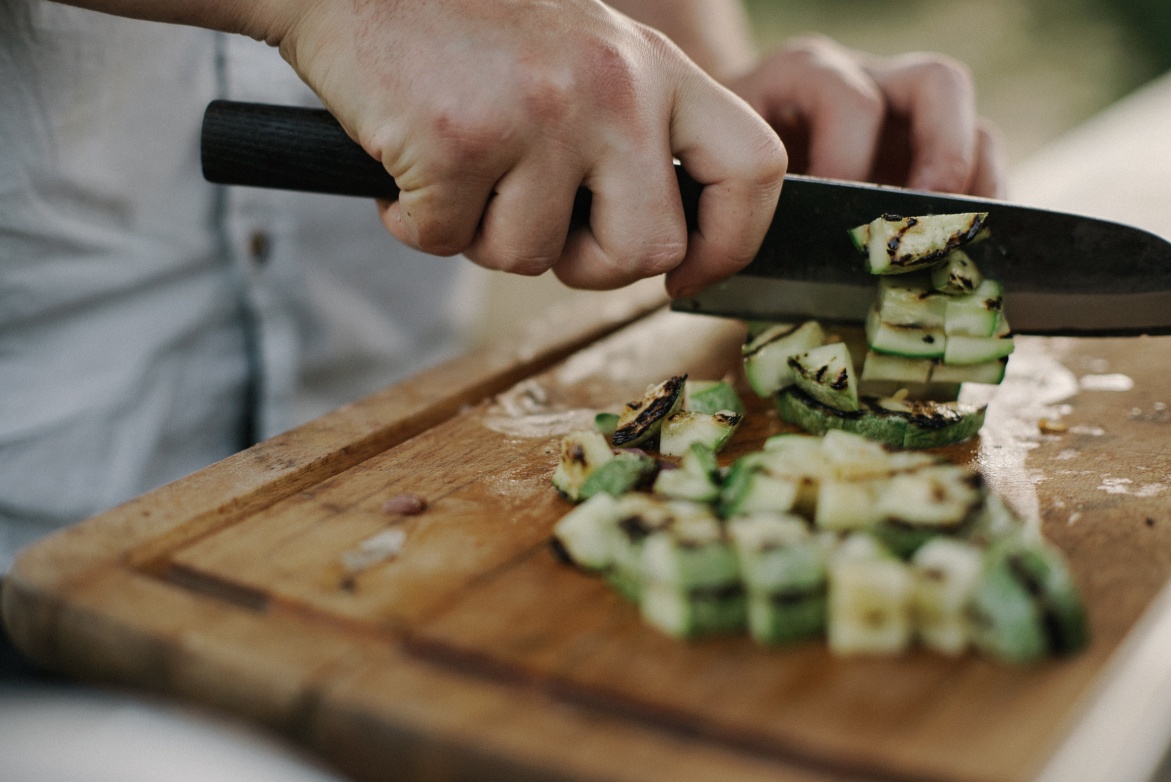A chef's knife is a classic in European cuisine, one of the leading blades a chef can do most of the cooking. Several years ago, a worthy competitor from Japan, santoku, appeared on the market. These knives are similar both in appearance and in functionality. We will find out how the santoku differs from the chef's knife and which is still better.
CHARACTERISTICS OF THE CHEF’S KNIFE
Chief in the kitchen - this is the well-deserved nickname of this blade. It owes this to its versatility because neither professional chefs nor inexperienced cooks can do without it. Let's list the features of the chef's knife:
- the design was developed in Germany and France;
- has a long wide blade, sharp narrow tip;
- the point is in line with the butt;
- the butt at the base is heavier and thicker than at the tip;
- heavyweight at the bottom of the blade;
- "Heel" is intended for cutting dense products; the tip is for fine cutting;
- made of steels of varying degrees of hardness;
- has a double-sided symmetrical sharpening.
SANTOKU: ABOUT THE FEATURES
Japanese knife culture is distinctive. The approach to cooking and using kitchen tools in this country also differs from the European style. Recently, Japanese knives have attracted more and more attention and deservedly become the favorites of professionals and lovers of the culinary arts. Japan has its primary knife, and its name is santoku. Even its name is translated as "three virtues." It means that the blade is suitable for cutting, chopping, and shredding food. This knife is also versatile and multifunctional, which is similar to the European version. Let's list the main differences between a santoku and a chef's knife:
- the design is traditionally Japanese;
- long wide blade, the tip is lowered down - the shape of a "sheep's leg";
- no pointed tip;
- the weight of the blade is relatively small; the blade is of medium thickness;
- made from hard types of steels or ceramics;
- has one-sided or two-sided (Europeanized models) sharpening.
- Speaking about how a chef's knife differs from a santoku, one cannot mention the minimum angle of sharpening the cutting edge, which is traditional for Japanese products. European manufacturers sharpen their knives at an angle of 30-45 degrees, while the Japanese sharpen their knives at 15-25 degrees. It provides a minimal area of contact with the product. In combination with the excessive sharpness of the hard cutting edge, it allows the knife to easily cut through the texture of even dense and fibrous products.
CHEF KNIFE AND SANTOKU - DIFFERENCES IN WORK TECHNOLOGY
Wielding a chef's knife, culinary specialists act in the usual way for Europeans - they swing the blade forward / backward, like a pendulum in a horizontal plane. With this technique, the shallow blade makes it easier to work and relieves some of the load from the hand. In this, the chef has no equal.
Santoku is meant to take a different approach to slicing, more like shredding. Chopping movements, from top to bottom, in a vertical plane. Here, the lowered tip is very suitable - it rests on the board and remains in this position. During cutting, only the base of the blade rises and falls. Thanks to the straight blade, the contact area with the board is increased, and the cutting in the chopping technique is optimal.
HOW TO MAKE THE RIGHT CHOICE
If you often cook, mainly fish and meat, and work in the traditional "rocking" technique, the chef's knife is your best option. If you don't do a day without shredding herbs, vegetables, and mushrooms, you should prefer santoku. There is also an opinion that the chef is more comfortable in a large man's palm and a more compact santoku in a woman's. However, this indicator is somewhat subjective.
Japanese brands produce not only national varieties of knives but also European ones. The shape and design features of a traditional chef in such a product, but the blade's material is of high quality, and the sharpening angle is minimal. High-carbon steel is often used, distinguished by its hardness and the ability to keep sharpening for a long time. Premium products are made of multi-layer Damascus steel, which serves for years; such blades are transmitted from one generation to another.



POST COMMENTS
0 COMMENT(S)